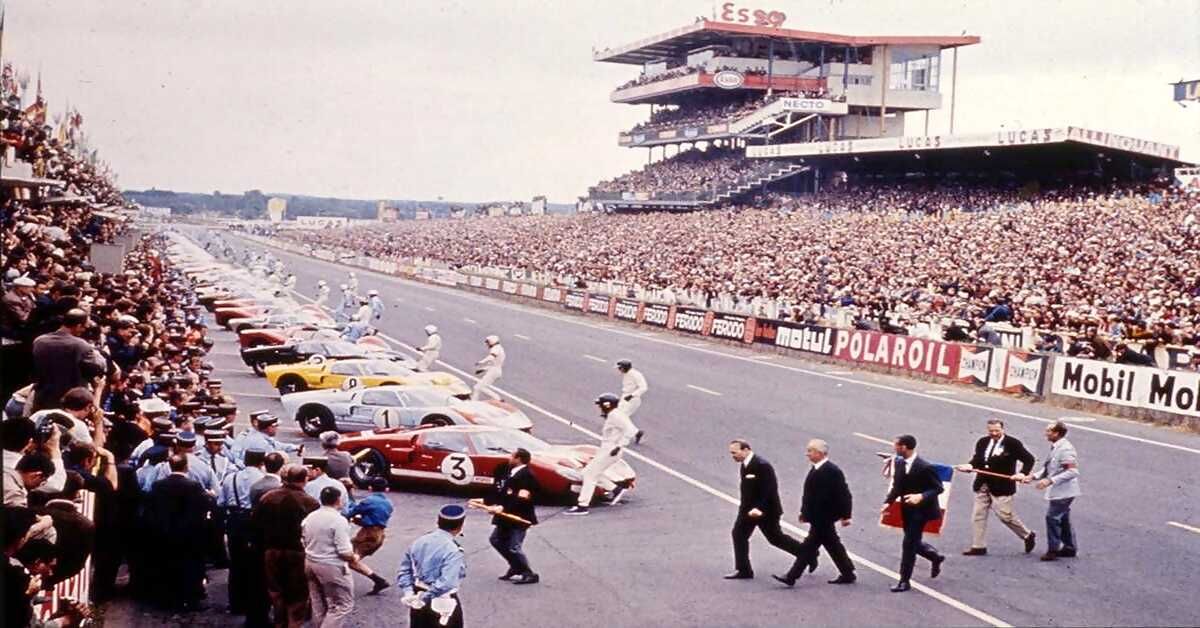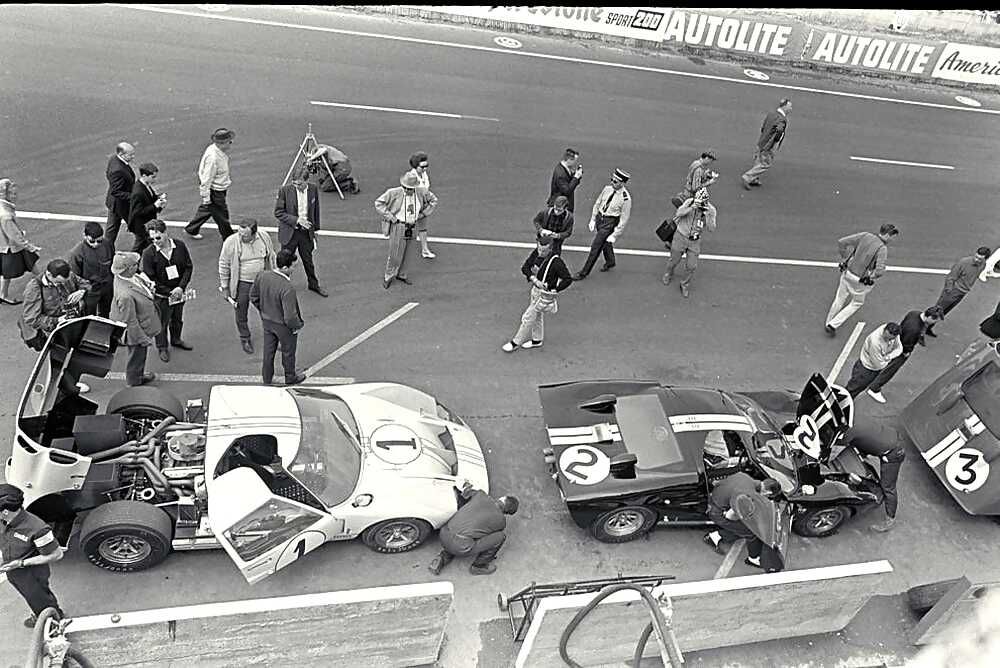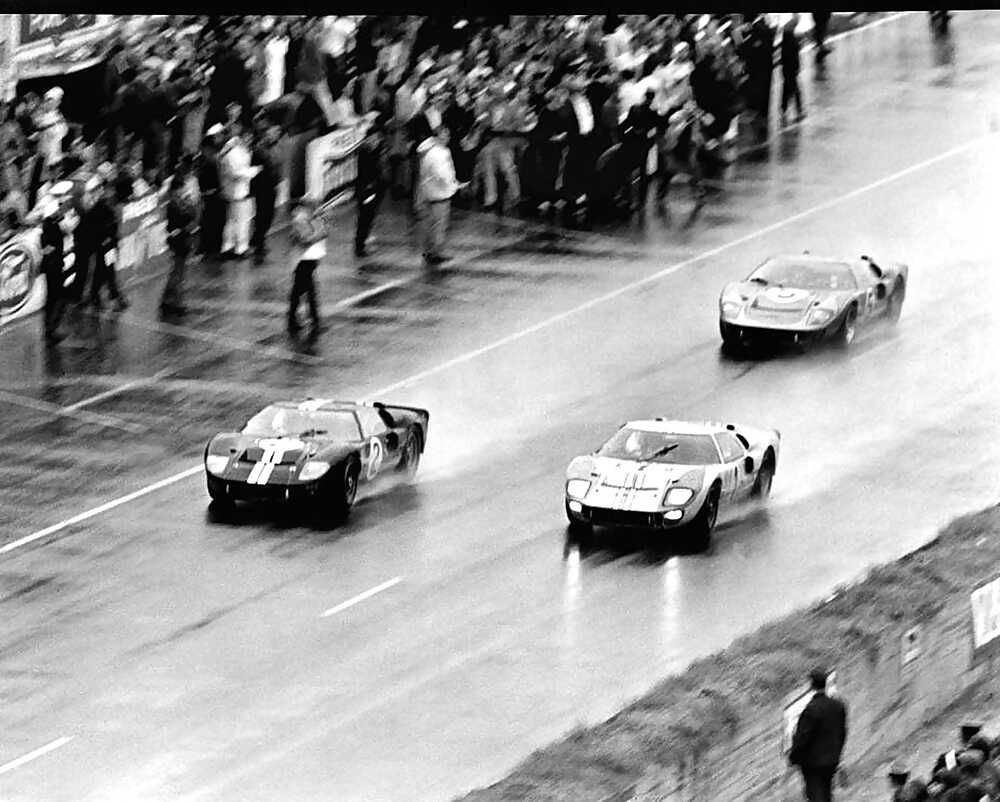Few races in the world get the attention and acclaim that the renowned Le Mans does. It has been held yearly since 1923, making it the oldest still active sports car endurance race in the world. The prestigious event has been the proving grounds of performance automakers for years, and in the 1960s, became the arena for one of the most bitter rivalries to ever come to be associated with motorsports.
The legendary rivalry between auto greats Ferrari and Ford was created when a deal went sour between the two when Ford attempted to acquire the Ferrari company in 1963. After Enzo Ferrari balked at selling, the deal fell through, and Henry Ford II decided that he would find his revenge at Le Mans.
Let’s take a closer look at how this rivalry led to Ford winning four years of back-to-back races at Le Mans.
The Struggle Towards Performance
When the deal fell through for Ford to purchase Ferrari, it is purported that Henry Ford II told Don Frey (his right-hand man) to go to Le Mans to beat Enzo Ferrari. This sparked a legend that has since been made into a blockbuster movie (albeit one that took several creative liberties) - the story of how Ford became a motorsport icon.
When first developing the car that would eventually take home the gold, Ford ran into a whole host of problems. Many of those problems stemmed from the fact that few in the Ford company actually had any racing experience. Despite being originally built on Henry Ford’s driving skills and ability to win races to bring in investors, that racing spirit had largely died out in the company.
After Congress had pressured the biggest three automakers into boycotting racing as a way of ensuring safety, only GM remained involved through NASCAR. Ford was attempting to build a performance machine that was largely improvisational from the ground up with no expertise in doing so. Despite a lack of overall experience, they proved they still had a fighting chance when they exited the safety agreement in 1962 and almost immediately dominated in the Daytona 500.
Ferrari had dominated the Le Mans for over a decade when Ford’s passion was ignited to win it. With a great amount of focus and the help of auto designer Carroll Hall Shelby, the GT40 was born. Although incredibly fast, the car struggled initially with reliability in lengthy races. Since the Le Mans is an endurance test, lasting a full 24 hours with the winner being the car that travels furthest in that time frame, it was imperative that adjustments were made.
Winning The Le Mans
After a Le Mans test showed that the GT40 could hit speeds of 200 mph but had stability issues that caused it to lift when it went above 170 mph, Shelby replaced the engine with a 427 cu in that had previously been used in the Cobra. This helped to weight the car down just enough when coupled with a new, slightly larger transmission to keep it from lifting at high speeds.
Ford tested the car by running it for 48 hours of simulated laps, changing out gears, and testing different pit stop needs over that course of time. They prepared another twelve engines for Le Mans, ensuring that they had plenty of spares just in case they were necessary to ensure victory against Ferrari.
After a rainy start, Ferrari found themselves outraced by the following morning. The GT40s held a commanding lead and finished victorious with the closest Ferrari, a stunning 47 laps behind (in eighth place). In an amazing photo finish, the three Ford cars finished in the top three spots together (a photo op coordinated by Ford executives asking the cars to slow/speed up to achieve the effect).
Although the photo opportunity caused driver Ken Miles his victory due to his slow down since the cars driven by competitors Chris Amon and Bruce McLaren started from a further back placement, Ford still counted it as a strong victory. With continued adjustments and evolutions to the same car, Ford went on to win back-to-back races from 1966-1969.



